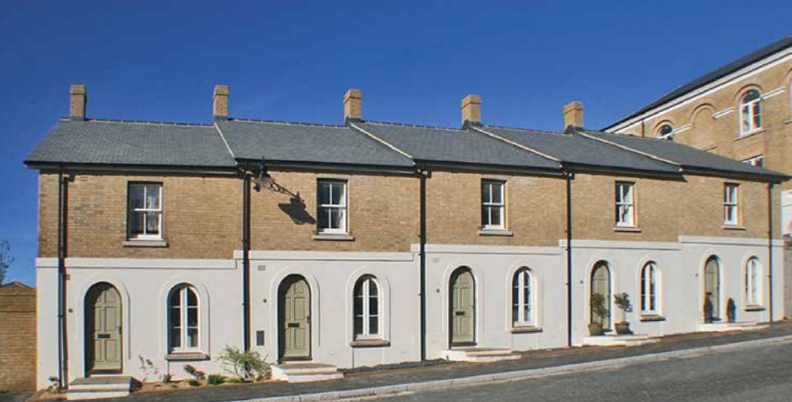Big growth in district heating markets - now and on the horizon

|
Contents |
[edit] Introduction
The market for district energy (DE), including district heating and district cooling, has witnessed large growth in many countries in Europe in the last five years – and also significant growth in China.
The six European DE markets researched by BSRIA in 2018 have a district heating and cooling (DHC) total installed capacity of slightly under 250,000 MWth, with China alone having 750,000 MWth. The seven researched countries are projected to grow by almost 5% by 2030. Compared to district heating, district cooling will remain “rather small” in these markets.
The BSRIA District Energy study provides valuable insight for China, France, Germany, Italy, Poland, Russia and the UK.
The main drivers are that construction players embrace DE for their competitive advantage and financial benefits: if there is sufficient demand and the projected income makes a project profitable, then the provider will take the necessary steps to create or upgrade a network.
Socrates Christidis, research manager of heating and renewables at BSRIA’s World Market Intelligence Division, said:
“Closely related to the progress of DE networks and the growing popularity of communal heating systems is the growth of central transfer stations and heat interface units (HIUs).
“Central transfer stations, also called heat substations, heavy-duty stations or simply ‘substations’, are used to connect larger buildings or sub-networks to a heat network. They are usually located at the connection of the main heat network to large buildings.
"HIUs (also called flat stations) extract heat from district heating networks to feed individual buildings and dwellings. How they perform is central to the overall efficiency of the heat network in a district heating scheme. Overall, there is a healthy growth for HIUs on a pan-European basis of 6%–7%.”
[edit] BSRIA testing of HIUs
Mr Christidis added: “There is also an increasing number of companies offering energy metering and billing, maintenance and ongoing management of communal heating and hot water systems for apartments and communal housing schemes.
“And, as in all areas of building services, the Internet of Things and artificial intelligence are starting to be exploited by some players to create fully automated and self-learning systems; these will better predict energy requirements, eliminate energy peaks, optimise indoor environments and offer predictive maintenance.”
[edit] About this article
This article first appeared in March 2019 on the BSRIA website and can be accessed here. To find out more about the study, call BSRIA on 01344 465 540 or email [email protected].
[edit] Postscript
BSRIA is a non-profit distributing, member-based association, providing specialist services in construction and building services. More information at www.bsria.co.uk.
BSRIA Test is a leading UK independent laboratory for testing, validation and performance of HVAC products and systems. As a UKAS (1053)-accredited laboratory to ISO 17025 with over 60 years' experience, it offers standard testing to BS, EN and ISO for CE approval and compliance with local schemes and global markets.
BSRIA's Worldwide Market Intelligence (WMI) division is a leading provider of a regularly released authoritative portfolio of published market reports and hot topics, in addition to bespoke studies and management consultancy. A wide range of off-the-shelf solutions includes HVAC, energy service and smart homes, renewable technology, refrigeration, structured cabling, lighting, security, fire detection and building controls.
BSRIA WMI also offers a market consultancy to the building and HVAC&R market stakeholders, building on its comprehensive data base of information, its expertise of the market’s competitive environment, its technical knowledge and analytical power.
[edit] Related articles on Designing Buildings Wiki
- Allowable solutions.
- BSRIA guide to heat interface units.
- Capital allowances.
- Climate Change Levy.
- Combined heat and power.
- Community energy network.
- Energy targets.
- Geothermal energy.
- Heat interface units.
- Heat meter.
- Heat Networks Investment Project HNIP.
- Masterplanning.
- Municipal energy - briefing sheet.
- National heat map.
- On-site generation of heat and power.
- Planning permission.
- Public private partnerships.
- Renewable energy.
- Smart cities.
- Sustainability.
- Water source heat map.
- What can government do about district heating.
--BSRIA
Featured articles and news
Key points for construction at a glance with industry reactions.
Functionality, visibility and sustainability
The simpler approach to specification.
Architects, architecture, buildings, and inspiration in film
The close ties between makers and the movies, with our long list of suggested viewing.
SELECT three-point plan for action issued to MSPs
Call for Scottish regulation, green skills and recognition of electrotechnical industry as part of a manifesto for Scottish Parliamentary elections.
UCEM becomes the University of the Built Environment
Major milestone in its 106-year history, follows recent merger with London School of Architecture (LSE).
Professional practical experience for Architects in training
The long process to transform the nature of education and professional practical experience in the Architecture profession following recent reports.
A people-first approach to retrofit
Moving away from the destructive paradigm of fabric-first.
International Electrician Day, 10 June 2025
Celebrating the role of electrical engineers from André-Marie Amperè, today and for the future.
New guide for clients launched at Houses of Parliament
'There has never been a more important time for clients to step up and ...ask the right questions'
The impact of recycled slate tiles
Innovation across the decades.
EPC changes for existing buildings
Changes and their context as the new RdSAP methodology comes into use from 15 June.
Skills England publishes Sector skills needs assessments
Priority areas relating to the built environment highlighted and described in brief.
BSRIA HVAC Market Watch - May 2025 Edition
Heat Pump Market Outlook: Policy, Performance & Refrigerant Trends for 2025–2028.
Committing to EDI in construction with CIOB
Built Environment professional bodies deepen commitment to EDI with two new signatories: CIAT and CICES.
Government Grenfell progress report at a glance
Line by line recomendation overview, with links to more details.
An engaging and lively review of his professional life.
Sustainable heating for listed buildings
A problem that needs to be approached intelligently.
50th Golden anniversary ECA Edmundson apprentice award
Deadline for entries has been extended to Friday 27 June, so don't miss out!
CIAT at the London Festival of Architecture
Designing for Everyone: Breaking Barriers in Inclusive Architecture.
Mixed reactions to apprenticeship and skills reform 2025
A 'welcome shift' for some and a 'backwards step' for others.



























